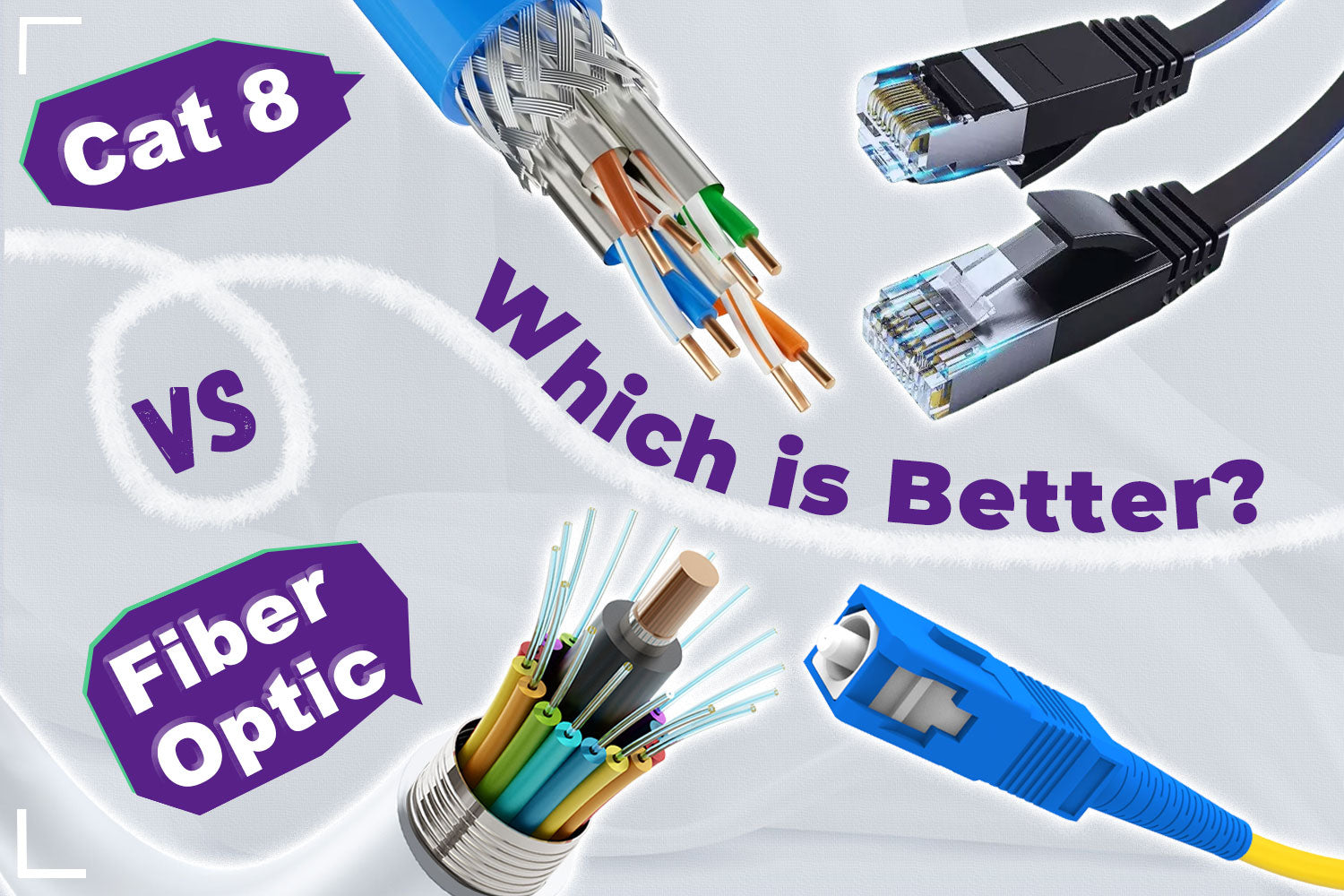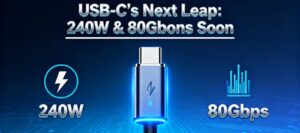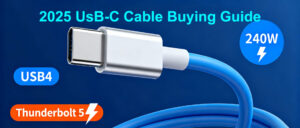Введение
По мере развития центров обработки данных для поддержки рабочих нагрузок, основанных на искусственном интеллекте, квантовых вычислений и гипермасштабных облачных сервисов обостряются споры о сетевой инфраструктуре. Возникает ключевой вопрос: Могут ли кабели Ethernet CAT8 заменить оптоволокно при развертывании центров обработки данных на коротких расстояниях? В то время как оптоволокно долгое время доминировало в высокоскоростной передаче данных, усовершенствования CAT8 ставят под сомнение эту иерархию. В этой статье на основе анализа данных рассматриваются технические возможности, последствия для стоимости и будущая жизнеспособность.
Кабели CAT8: Медное решение нового поколения
Технические характеристики
Кабели CAT8, стандартизированные IEEE в 2021 году, рассчитаны на скорость от 25 Гбит/с до 40 Гбит/с на расстоянии 30 метров (98 футов) с полосой пропускания 2 000 МГц. Ключевые особенности включают:
Кабели CAT8, стандартизированные IEEE в 2021 году, рассчитаны на скорость от 25 Гбит/с до 40 Гбит/с на расстоянии 30 метров (98 футов) с полосой пропускания 2 000 МГц. Ключевые особенности включают:
- Экранированная витая пара (STP): Повышенная устойчивость к электромагнитным помехам.
- Обратная совместимость: Работает с существующими разъемами RJ45.
- Низкая задержка: Идеально подходит для приложений, чувствительных к задержкам, например, для выводов ИИ в реальном времени.
Преимущества перед волоконной оптикой
-
Эффективность затрат
- Установка: CAT8 не требует специализированных инструментов, что сокращает трудозатраты на ~40% по сравнению с заделкой оптоволокна.
- Оборудование: Совместим со стандартными коммутаторами, что позволяет отказаться от дорогостоящих оптических приемопередатчиков.
-
Долговечность
Медные кабели лучше выдерживают изгибы и физические нагрузки, чем хрупкие оптоволоконные нити, что очень важно в плотных серверных стойках. -
Питание через Ethernet (PoE)
CAT8 поддерживает PoE++ (до 90 Вт), обеспечивая питание и передачу данных для устройств IoT по одному кабелю - оптоволокно не может повторить эту функцию.
Волоконная оптика: Непревзойденный исполнитель
Почему оптоволокно все еще царствует
Волоконная оптика остается золотым стандартом:
Волоконная оптика остается золотым стандартом:
- Передача на большие расстояния: Отсутствие деградации сигнала на протяжении километров.
- Масштабируемость полосы пропускания: Одномодовое оптоволокно позволяет достичь скорости 100 Гбит/с+.
- Устойчивость к электромагнитным помехам: Невосприимчивы к электромагнитным помехам, что очень важно для промышленных условий.
Ограничения в сценариях на короткие расстояния
- Стоимость: Оптические трансиверы и квалифицированная рабочая сила увеличивают первоначальные затраты на 50-70%.
- Хрупкость: Оптоволоконные коммутационные шнуры требуют бережного обращения.
- Модернизация комплекса: Переход на более высокие скорости (например, 400 Гбит/с) часто требует нового оборудования.
Сравнение с глазу на глаз
| Критерии | Кабель CAT8 | Волоконная оптика |
|---|---|---|
| Максимальная скорость | 40 Гбит/с (30 м) | 100 Гбит/с+ (100 м+) |
| Латентность | <0,1 мс | <0,05 мс |
| Стоимость за метр | $2-$5 | $5-$15 + стоимость трансивера |
| Устойчивость к электромагнитным помехам | Высокая (экранированная конструкция) | Иммунитет |
| Доставка электроэнергии | Поддерживается PoE++ | Не применимо |
Пример использования: центры обработки данных на коротких расстояниях
Сценарий: Гипермасштабный центр обработки данных, в котором развернуты учебные кластеры ИИ с линиями связи между серверами и коммутаторами длиной 10-20 м.
- Преимущества CAT8:
- Экономия средств: 30% снижает совокупную стоимость владения (TCO) за 5 лет.
- Упрощенное обслуживание: Не требуется очистка волокна или калибровка сигнала.
- Недостатки волокна: Излишество для коротких расстояний, лишние расходы на трансивер.
Тенденции будущего и синергия
- Гибридные развертывания:
Комбинируйте CAT8 для внутристоечных соединений и оптоволокно для магистральных/основных сетей. - CAT8 Innovations:
Появляющиеся варианты с частотой 2000 МГц+ призваны сократить разрыв в скорости с оптоволокном в диапазонах менее 30 м. - Сети с квантовой готовностью:
По мере развития квантовых вычислений (например, чип Willow от Google) медь с низкой задержкой может дополнить фотонные межсоединения.
Заключение
Кабели CAT8 являются жизнеспособной альтернативой оптоволокну в центрах обработки данных с малой дальностью действияособенно там, где приоритетами являются стоимость, PoE и физическая прочность. Однако оптоволокно сохраняет доминирующее положение в области масштабируемости и производительности на больших расстояниях. Для защиты будущего гибридная стратегия, использующая обе технологии, обеспечивает оптимальную гибкость.
Основные выводы:
Выбирайте CAT8 для серверных стоек и периферийных устройств на расстоянии менее 30 м; для магистральных и высокоскоростных кросс-соединений используйте оптоволокно.
Выбирайте CAT8 для серверных стоек и периферийных устройств на расстоянии менее 30 м; для магистральных и высокоскоростных кросс-соединений используйте оптоволокно.






